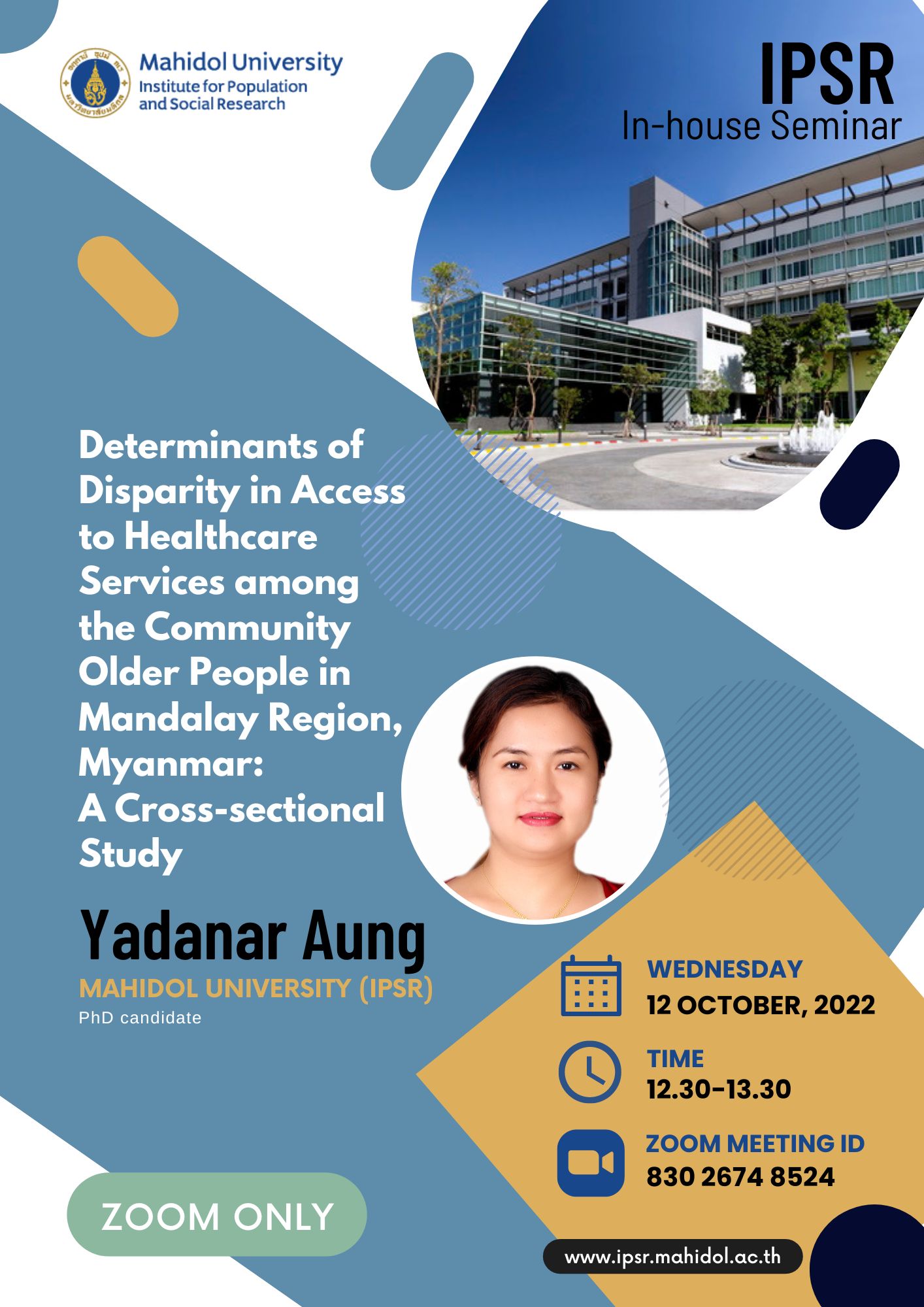Seminar No. 1192
12 ตุลาคม 2565 เวลา 12:30-13:30 น.
Speaker: Mrs. Yadanar Aung
Abstract
Background: The rights of older people to access healthcare when they need is crucial for improvement of health. It thus appears to be of importance of the health care services provision in Mandalay: a region of the second highest aging index. A research required to find out more about the determinants of healthcare utilization and factors association with the geographical differences in access to healthcare services among older people who is needed to perceive health care at the time of sick or illness. Methods: A community-based, cross-sectional analytical study was conducted with a total of 676 older persons. The association between perceived healthcare services and its determinants was assessed with various predisposing factors (such as age, gender, and current employment status), enabling factors (such as place of residence, household monetary income and wealth status) and reinforcing factors (such as self-rated health and having health problems). Results: Over half of the elderly (58.9%) had health problems last 12 months and also (57.4%) perceived healthcare services from private or private clinics/hospitals (38.9%) and (3.9%) from charity clinics. While asking about the main reason to visit, the majority of them went to outpatient care (37.1%) and in-patient care (12.1%). The percentage of older people perceived health care in Myingyan (67.6%) followed by Nyaung U (59.6%) and (43.7%). When focusing on current employment status as a predisposing factor, it is clearly found that unemployed older people (67.3%) utilized health care services relatively higher than that of employed (44.7%) and unpaid family workers (53.2). With regards to the significant enabling factors, the higher access to health care were found in older people who living in urban area (63.0% in urban vs 53.3% in rural). When focusing on reinforcing factors, all variables were strongly associated with access to health care services (p < 0.001). Conclusion: Unemployment older people reported higher utilization of healthcare and adhere to more place of residence, urban roles than rural population in Mandalay region. Health related reinforcing factors highly related to access the healthcare. We found that occupation and household level economic status were important factors. The geographical disparity was noticed and the better access to healthcare in Meikhtila district should be prioritized while comparing to the other districts in Mandalay region. Keywords: Disparity/ Accessibility/ Utilization/ Aging/ Healthcare/ Myanmar
